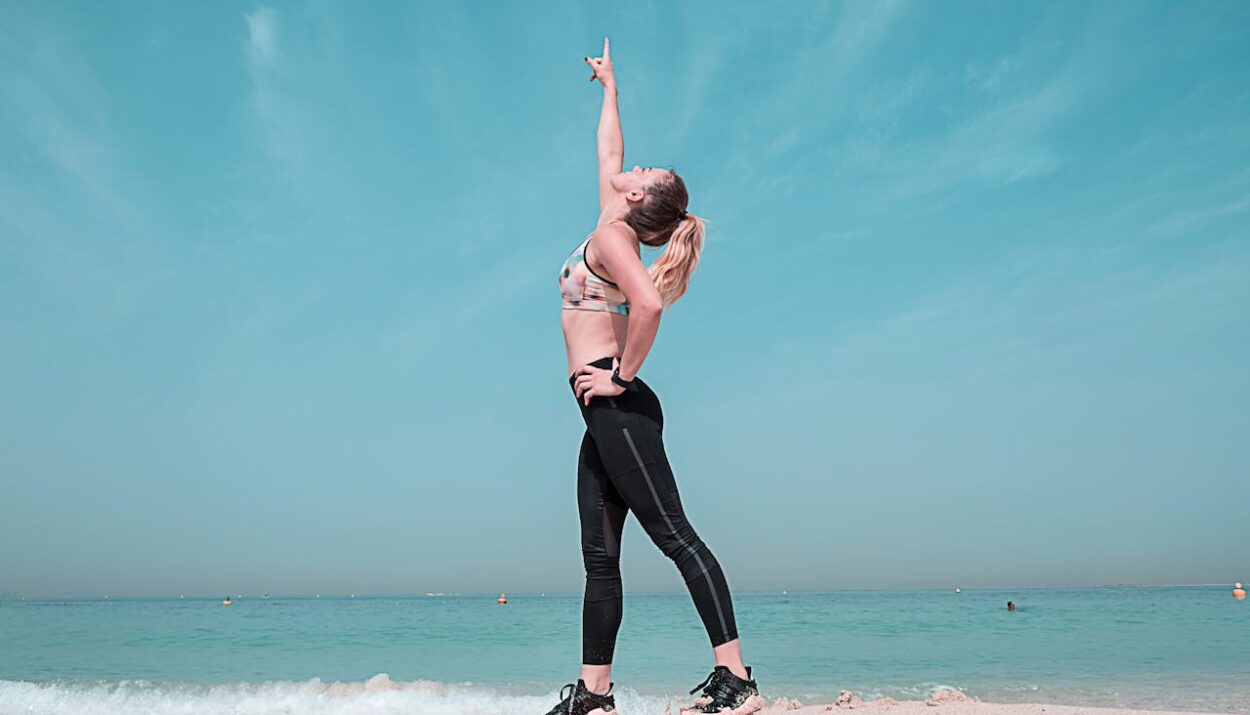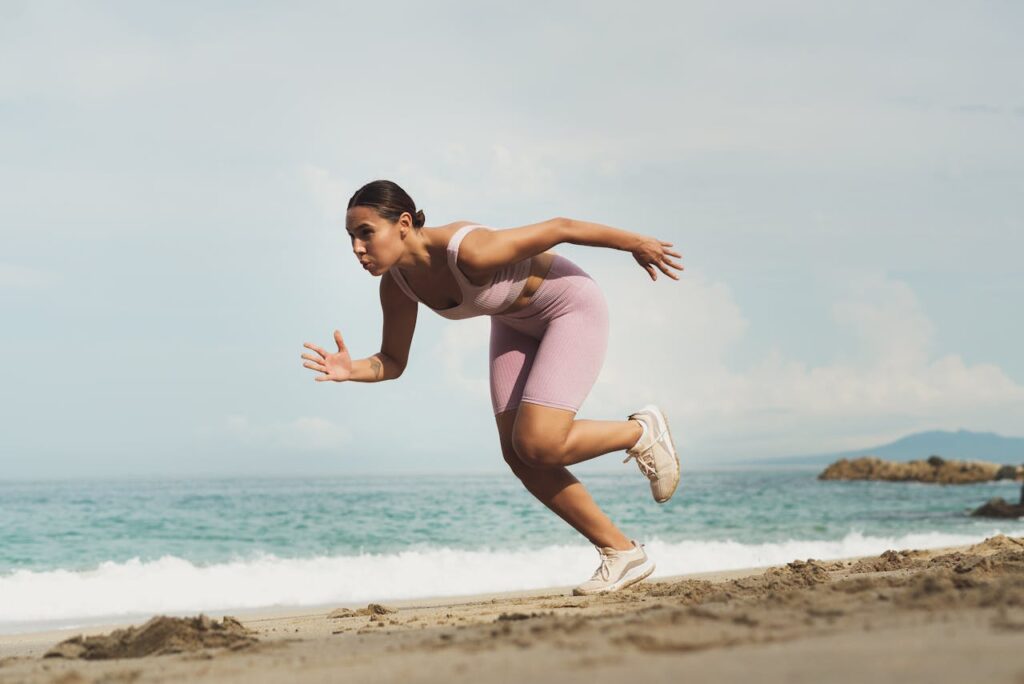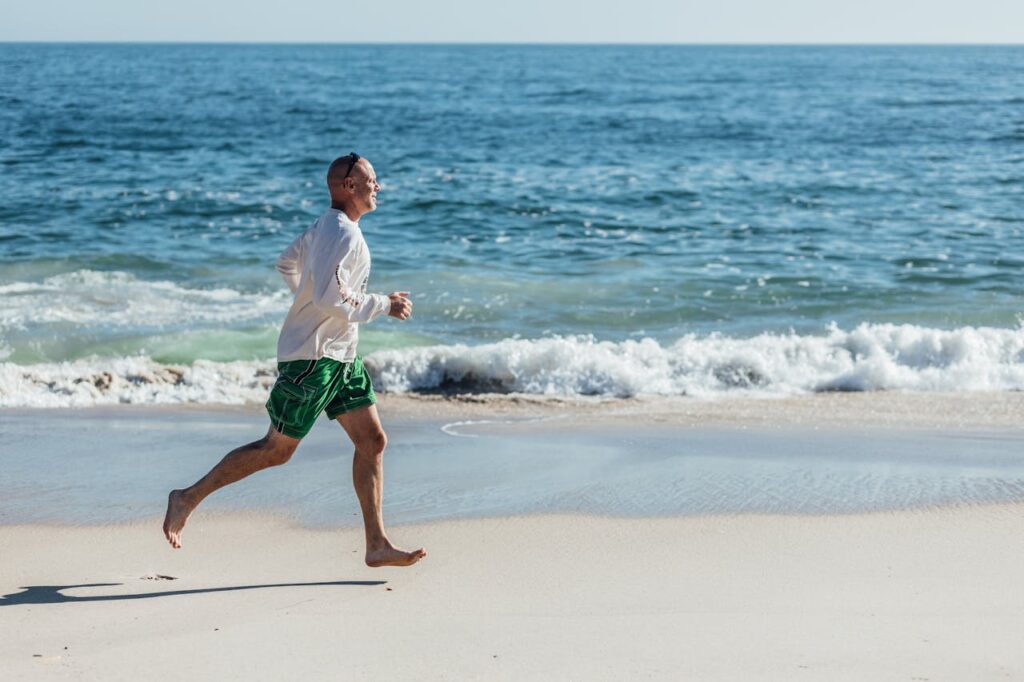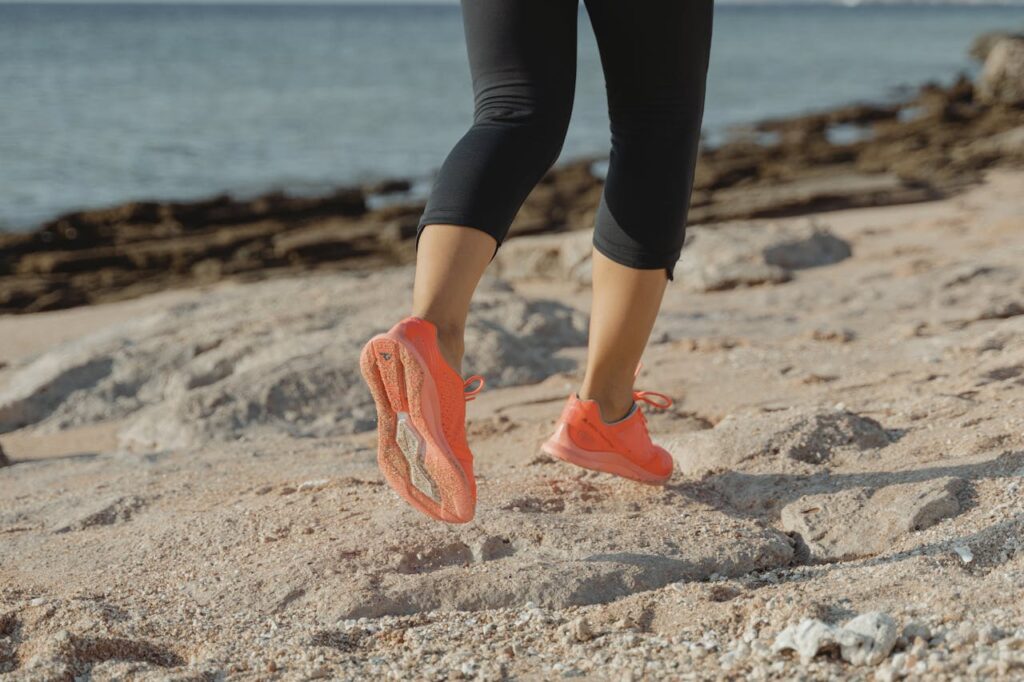The benefits of running on the beach are plentiful, offering a refreshing departure from traditional running and gym routines. The combination of sun, sea, and sand creates a natural playground for runners of all levels. However, one of the most intriguing questions is whether to embrace the barefoot experience or opt for the support of shoes. In this article, we’ll delve into the advantages of both approaches, exploring the unique benefits of running on the beach barefoot and with shoes.
Uncover the benefits of running on the beach and decide between going barefoot or wearing shoes. Explore the pros and cons of each approach.
In this article:
- Why Running on the Beach is Great for You
- Benefits of Running on the Beach Barefoot
- Advantages of Running on the Beach with Shoes
- Barefoot vs. Shoes: Which is Better for Beach Running?
- Essential Tips for a Safe and Effective Beach Run
WHY RUNNING ON THE BEACH IS GREAT FOR YOU
Running on the beach offers unique benefits that enhance your fitness and well-being.
One of the primary advantages is the reduced impact on your joints. The soft, sandy surface provides natural cushioning, which helps reduce the strain on your hips, ankles, and knees compared to running on surfaces like concrete or asphalt. It can particularly benefit those with joint issues or those recovering from injuries.
Another significant benefit is the increased muscle engagement. Running on sand requires more effort from your stabilizing muscles, particularly in the legs and core, because the uneven surface forces your body to work harder to maintain balance and forward motion. It can lead to improved strength, stability, and overall muscle tone.
Beach running also enhances calorie burn. The extra effort needed to move through the sand results in a higher energy expenditure, making it an effective workout for those looking to lose weight or improve cardiovascular fitness. The resistance offered by the sand provides a natural form of strength training, further contributing to muscle endurance and development.
In addition to physical benefits, beach running can improve mental health. The serene, natural environment, combined with the fresh sea breeze and the sound of waves, can have a calming effect, minimizing stress and enhancing mood. The aesthetic beauty of the beach can make your workout feel less like a chore and more like a rejuvenating experience.
Beach running exposes you to natural elements such as sunlight, which helps your body produce vitamin D. Vitamin D is vital for your bones’ health and a healthy immune system.
The combination of reduced joint impact, increased muscle engagement, enhanced calorie burn, and mental health benefits makes running on the beach a holistic and highly beneficial exercise.
BENEFITS OF RUNNING ON THE BEACH BAREFOOT
Running on the beach barefoot offers many benefits that can amplify your fitness routine and overall well-being.
First and foremost, going barefoot allows for more natural foot movement. Without the constraints of shoes, your feet can flex and adapt to the contours of the sand, promoting better foot mechanics and strengthening the muscles in your feet and lower legs. This natural movement can enhance proprioception, or the awareness of your body’s position and movement, improving coordination and balance over time.
Moreover, running barefoot on the beach provides an unparalleled sensory experience. Feeling the sand beneath your feet stimulates the nerve endings, enhancing sensory feedback and connecting you more intimately with your environment. This sensory engagement can deepen your connection with nature and elevate the overall enjoyment of your run.
Additionally, barefoot beach running can be a form of grounding or earthing, a practice believed to have various health benefits. Proponents suggest that direct contact with the earth’s surface may help neutralize free radicals and reduce inflammation, improving sleep quality, reducing stress levels, and promoting overall well-being.
Furthermore, running barefoot on the beach uniquely challenges your muscles and joints. The instability of the sand requires greater activation of the stabilizing muscles in your feet, ankles, and lower legs to maintain balance and propulsion. This increased muscle engagement may lead to greater strength, stability, and resilience, ultimately reducing the risk of injury during other physical activities.
Running barefoot on the beach offers a holistic and stimulating workout experience, engaging your body, mind, and senses in harmony with nature.
ADVANTAGES OF RUNNING ON THE BEACH WITH SHOES
Running on the beach with shoes also offers a range of benefits.
One significant advantage is the protection that shoes provide. The uneven surface of the beach, coupled with potential hazards like sharp shells or rocks, can pose a risk of injury to your feet. Wearing shoes can safeguard against cuts, abrasions, and other foot injuries, allowing you to run confidently and safely.
Additionally, running shoes offer cushioning and support, which can help diminish the strain on your joints and muscles. It is especially beneficial when running on more challenging or compacted beach areas where the sand may provide less natural cushioning. The added support from shoes can minimize the strain on your hips, ankles, knees, and feet, potentially reducing the risk of overuse injuries.
Furthermore, designers craft running shoes for traction and stability, even on unstable surfaces like sand. It can improve your grip and help you maintain balance while navigating the beach terrain, reducing the risk of slips and falls.
Whether you prefer minimalist shoes for a more natural feel or cushioned shoes for extra comfort and support, different options are available to enhance your beach running experience.
For example, consider the WateLves Shoes. These shoes offer a spacious toe box for natural foot movement, ensuring a barefoot feel while providing essential protection against sharp shells and rocks. Their soles offer stability and reliable traction, promoting proper posture and reducing the risk of slips and falls on sandy terrain. WateLves Shoes allows you to enjoy the benefits of beach running while minimizing the risk of injury.
BAREFOOT VS. SHOES: WHICH IS BETTER FOR BEACH RUNNING?
Whether to run on the beach barefoot or with shoes depends on personal preferences and fitness goals, as both methods offer unique benefits and potential drawbacks. The table below outlines the pros and cons of each approach:
| Barefoot Running | Running with Shoes | |
| Pros | Natural foot movement | Protection against hazards |
| Strengthens feet and lower leg muscles | Cushions and support joints and muscles | |
| Enhances proprioception | Reduces risk of cuts, abrasions, and burns | |
| Deepens sensory connection with nature | Provides traction and stability | |
| Cons | Exposure to sharp objects and hot sand | Less natural foot movement |
| Higher risk of cuts and abrasions | Can feel less connected to nature | |
| Potential for burns from hot sand | Might be heavier and less flexible | |
| Ideal for | Strengthening feet and enhancing balance | Individuals needing extra support and protection |
| Enjoying a natural running experience | Those recovering from injuries or with joint issues |
Try both methods and listen to your body to determine which approach best suits your beach running routine.
ESSENTIAL TIPS FOR A SAFE AND EFFECTIVE BEACH RUN
Here are some essential tips to keep in mind:
- Choose the Right Time: Beach running is best done during low tide when the sand is firm and compact. It provides a more stable surface, lowering the risk of injuries from uneven terrain. Early morning or late evening runs are ideal to escape the midday sun and heat.
- Starting Slow: If you’re new to beach running, remember it’s a journey, not a race. The soft sand can be much more challenging than solid ground, so begin with shorter distances and slowly increase your mileage as your body adapts to the new conditions. Each step is a step towards your fitness goals.
- Stay Hydrated: Running on the beach can lead to faster dehydration due to the sun and sea breeze. Bring a water bottle and pause regularly to stay hydrated, especially on hot days.
- Protect Your Skin: Put on sunscreen before you go to shield your body from damaging UV rays. Wear a hat and sunglasses.
- Listening to Your Body: Your body is your best guide. Beach running can be demanding on your muscles and joints. Pay attention to discomfort or pain, and don’t push yourself too hard. Incorporate rest days and cross-training to allow your body to recover. Remember, your body’s signals keep you safe and healthy.
_____
The benefits of running on the beach are undeniable. It offers a holistic workout experience that engages the body and invigorates the spirit. Whether you like to feel the sand between your toes or opt for the support of shoes, beach running provides a unique opportunity to connect with nature while improving your physical fitness.
This post may contain affiliate links. You can read the affiliate disclosure here.









